Sir George Edwards
Aircraft designer with a flair for leadership, who designed the Viscount and oversaw the development of Concorde
by Peter Masefield - who knew Sir George Edwards as a loyal friend and a cheerful companion.
First published in THE INDEPENDENT - Friday 7 March 2003
George Robert Edwards, aircraft designer: born Highams Park, Essex 9 July 1908; design staff, Vickers Aviation (later Vickers-Armstrongs), Weybridge 1935-40, experimental manager 1940-48,
chief designer 1948-53, managing director 1953-60; MBE 1945, CBE 1952; Kt 1957; managing director, British Aircraft Corporation 1960-63, chairman 1963-75; President of the Royal Aeronautical
Society 1957-58; Pro-Chancellor, Surrey University 1964-79 (Emeritus); FRS 1968; OM 1971; President, Surrey County Cricket Club 1979-89; married 1935 Dinah Thurgood (died 1994; one daughter);
died Guildford, Surrey 2 March 2003.
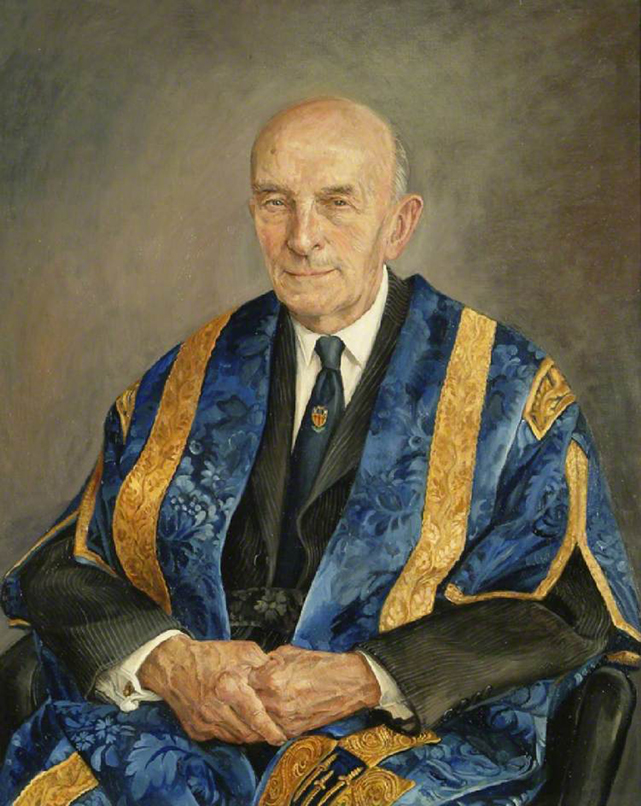
Sir George Edwards by Jane Allison
Painted in 1989 now in the collection of the University of Surrey
When, in due course, the post-war history of British aircraft design, development and production comes to be written, one name above all others will be accorded acclaim. George Edwards stood out
as the dominant British personality, of world stature, among the second generation of aeronautical engineers and industry leaders – carrying forward the torch of pioneers such as Geoffrey de
Havilland, Donald Douglas, Richard Fairey, Frederick Handley Page, James McDonnell, A.V. Roe, the Short brothers and Tom Sopwith.
Edwards had that rare combination of an outstanding talent for aeronautical design combined with a flair for leadership. Always direct, of absolute rectitude and blessed with a keen sense of
humour, Edwards was held in esteem by colleagues, customers and competitors throughout the world. Added to that, he brought dedication and hard work to a wide variety of other activities. They
included his distinction as Pro-Chancellor Emeritus of Surrey University, his presidency of the Surrey County Cricket Club (he was proud of having once bowled the great Leary Constantine for 11
runs) and his presidency of the Guild of Aviation Artists. He was a well-rounded man of a legion of attainments and friends.
George Robert Edwards was born at Highams Park in Essex in 1908, the son of Edwin George Edwards, then a stationer at Walthamstow, and his wife, Mary, née Freeman, who died two weeks after George
was born. He went to school locally, then to the South West Essex Technical College and on to London University, where he gained a BSc in Engineering – and a lifelong
devotion to cricket.
In 1928, George Edwards went into heavy industry in the North-East, working as a structural engineer on the design and construction of such diverse products as lock-gate machinery and hydraulic
pumps. From these humdrum introductions to structural engineering, he joined the Hayes Wharf Company, on the south bank of the Thames downstream of London Bridge, where he gained a wider
experience of the design, construction and operation of large tugs and small river craft.
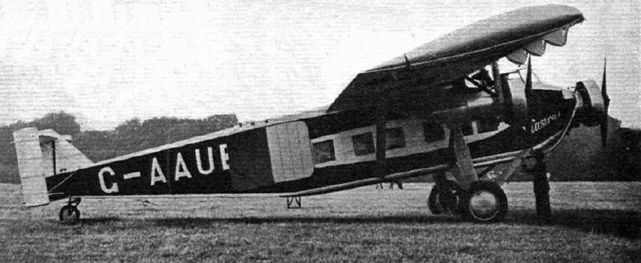
The first Vickers Viastra G-AAUB, a 12-passenger monoplane of 1930
After seven years of this somewhat unrewarding toil, he decided – at the age of 27 – that the future lay in more advanced projects, with higher pay, in a lighter field. So, in 1935, he joined,
at £5 10s a week, the Drawing Office of Vickers (Aviation) Limited at its Weybridge works, Brooklands, under the paternal leadership of the pioneer aircraft designer Rex Pierson, when the British
aircraft industry was beginning to surface from the lean years following the First World War into the first stages of the RAF expansion. Paradoxically, on his first day at Brooklands, Edwards was
given a salutary impression of the civil side of the business. He watched the prototype Vickers Viastra, a 12-passenger monoplane of 1930, being broken up with sledge-hammers.
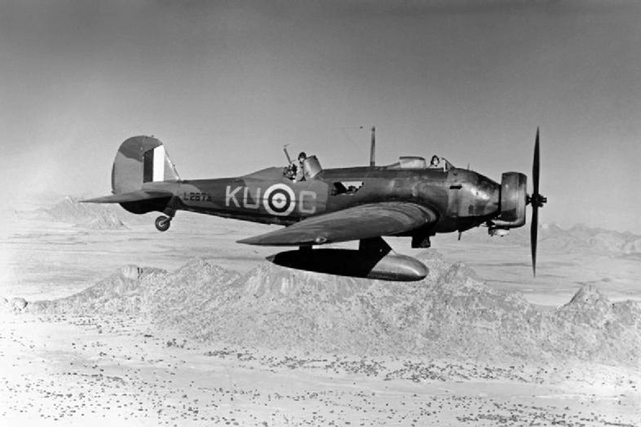
Vickers Wellesley, a general purpose aircraft for the RAF
He began work on the G 4/31, general-purpose, military biplane, for which Vickers had won an Air Ministry contract for 150 machines. The chairman, Sir Robert McLean, boldly decided that the
specification could now better be met by a new approach and switched the design team to a private venture monoplane. The result was the Vickers Wellesley – a combination of Barnes Wallis's ideas
for a geodetic structure and Pierson's long experience of aircraft for the Royal Air Force.
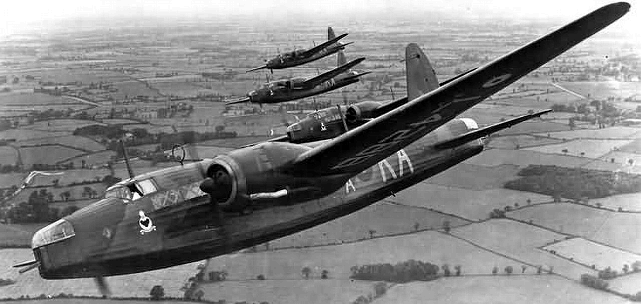
Vickers Wellington, the mainstay of RAF Bomber Command
during the first years of the Second World War
From the Wellesleys came the twin-engine Vickers Wellington bomber, the mainstay of RAF Bomber Command during the first years of the Second World War. In September 1939, the German Luftwaffe began
to lay magnetic mines in the Thames Estuary, to the grave peril of Allied shipping. Urgent counter-measures were set in hand by Vickers.
A 48ft-diameter, electrically charged, magnetic coil was mounted in an air-cooled, streamlined casing underneath the wings and fuselage of a Mark 1A Wellington. "G.R.E." was given design and works
responsibility for this top-priority job at Brooklands; and ordered to report progress every night direct to the First Lord of the Admiralty, Winston Churchill. By day and night work throughout
Christmas of 1939, trials of low-flying, "de-gaussing" Wellingtons were completed successfully to explode magnetic mines in home waters – and thereafter in the Suez Canal and the Mediterranean.
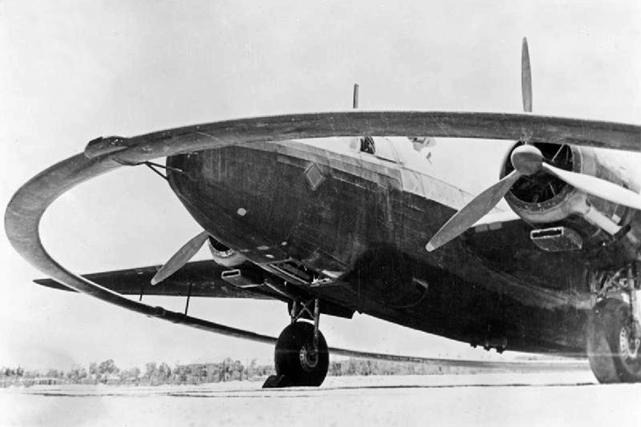
A Vickers Wellington fitted with a 48ft-diameter, electrically charged, magnetic coil
Edwards's success with these special Wellingtons (and recognition of his abilities as a conceptional designer) brought him, at the age of 32 in 1940, to the responsible position of Experimental
Manager at Brooklands and appointment as MBE.
By 1944, he was working with Pierson on the Wellington-derived Vickers VC-1 Viking, Vickers' first stressed-skin aeroplane to go into production, intended as an interim post-war, civil transport.
In all, 163 of them were built, including seven for the reconstituted Royal Flight.
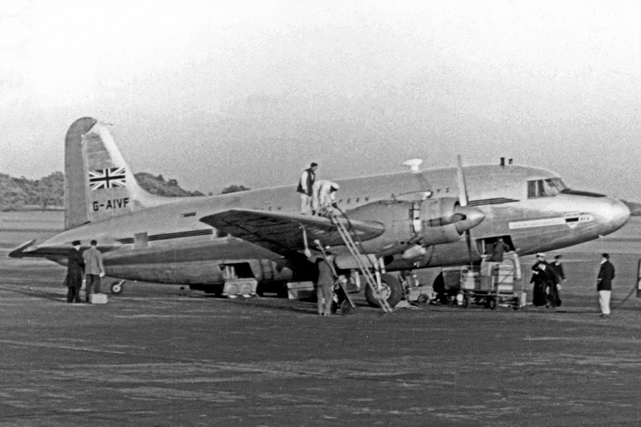
Vickers VC-1 Viking, Vickers' first stressed-skin aeroplane to go into production
When Pierson died in February 1948, Edwards was his natural successor as Vickers' chief designer. There was, however, nothing of a prima donna attitude to design in the practical George Edwards.
He was quickly pulling his full weight as a member of the formidable Vickers Armstrongs aircraft team at Weybridge under McLean's chairmanship, with Hew Kilner as managing director, Tom Gammon
as works manager, and Barnes Wallis on special projects.
The subsequent "Edwardian line" of civil and military aircraft which flowed from the Vickers works at Weybridge reads like a roll-call of British technological and commercial achievements
throughout the 1950s and 1960s – Viking, Valletta, Varsity, Viscount, Valiant, Vanguard, VC 10 and One Eleven. Among them, a prototype Viking was the world's first jet-powered transport aeroplane;
the Viscount the world's first turbine-powered transport aircraft to go into commercial airline service; the Valiant the first of the British V-bombers; and the VC 10 the foremost long-range jet
transport of its era.
Under his chairmanship, from 1963, of the British Aircraft Corporation (as the company became), the design and construction of the Anglo-French Concorde was brought to fruition, followed by the
design and production of the Jaguar and Tornado advanced military aircraft as further examples of European collaboration. In all, 1,486 Vickers and BAC aircraft – from Vikings to One Elevens – were
designed and built under Edwards's leadership (and several hundred remain in service) together with the collaboration Concordes, Jaguars and Tornados.
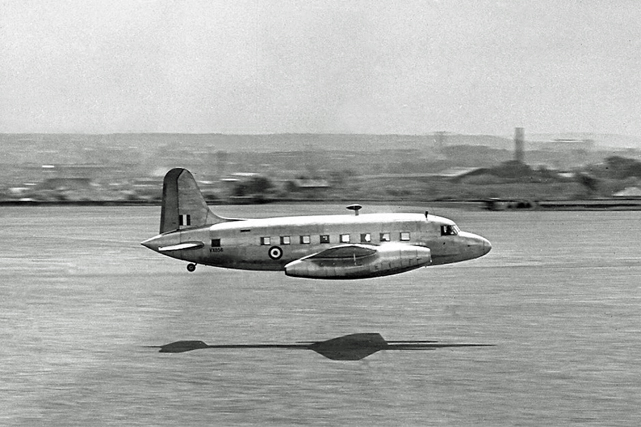
This prototype Viking was the world's first jet-powered transport aeroplane
A notable marker along the way was when, on 25 July 1948, a specially modified, all-silver, Vickers V 618 Viking, with two Rolls-Royce Nene jet engines, flew from Heathrow to Villacoubley, Paris,
in 34 minutes, seven seconds, at a ground speed of 384mph, piloted by Vickers' Chief Test Pilot, Mutt Summers, with Edwards as co-pilot. By 1949, close working links had been forged between the
respective teams of Vickers at Brooklands and British European Airways at Northolt. By then, BEA was operating, successfully, 37 Vikings which accounted for two-thirds of BEA's total passenger
carryings in that year.
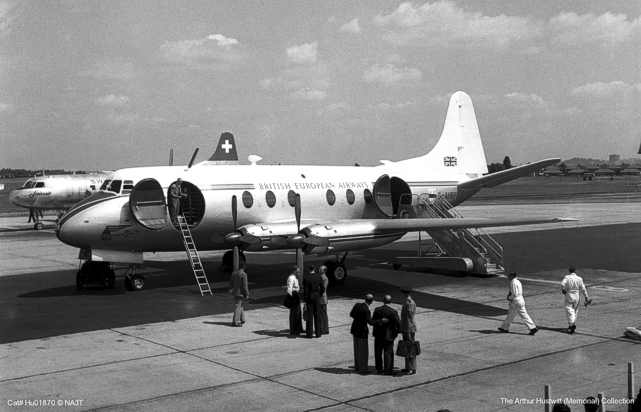
On 29 July 1950 the prototype Viscount operated the world's first turbine-powered airline service
This constructor/airline collaboration was further cemented when a full Certificate of Airworthiness was gained for the turbine-powered Viscount V 630 prototype. On 29 July 1950, it operated, in
BEA colours, the world's first turbine-powered airline service between Northolt and Le Bourget and during the next month carried 1,815 passengers between London and Paris and London and Edinburgh
in a total of 127 flying hours. Edwards himself headed a vigorous sales team which achieved the first substantial sale of British airliners to North America when, in November 1952, Trans-Canada
Airlines placed an initial order for 15 Viscounts. It was followed by an order for 60 Viscounts from Capital Airlines of Washington, DC.
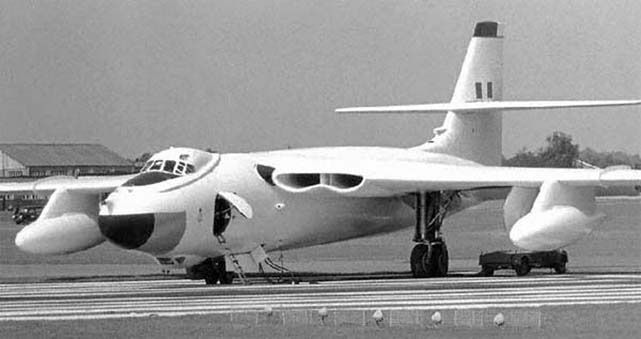
The four-jet Vickers Valiant bomber
When Kilner died in 1953 at the age of 61, George Edwards succeeded him as Managing Director of Vickers Armstrongs (Weybridge) Limited. He was appointed to the board in June 1955. By that time,
the successive variants of the Viscount, followed by its larger brother, the Vanguard, and the four-jet Valiant bomber had brought Vickers and George Edwards into the front rank of the world's
aircraft constructors – a fact which was further recognised in 1959 by the award to him of the United States' prestigious Guggenheim Gold Medal for "achievement in aeronautics".
In 1952, Edwards had proposed to follow up the experience and the success gained with the civil Viscount and the military Valiant, with a substantially larger development of the bomber as a
long-range jet transport for the Royal Air Force (the V 1000), and as a 120-passenger, 440-knot, North Atlantic liner (the VC 7) for BOAC.
With more than £20m invested by the Government in the turbo-prop Britannia for BOAC and a perceived need to support Short Brothers in Belfast with a Britannia production order for RAF Transport
Command, the VC 1000 was killed at a meeting of the inter-departmental Transport Aircraft Requirements Committee in 1955. Thereupon, Sir Miles Thomas of BOAC rejected the VC 7. A year later, BOAC
ordered 15 Boeing 707s.
Thus was the British aircraft industry taken out of the long-range, civil jet market – as Edwards remarked, "A decision we shall regret for many years" and one only partly retrieved by the Vickers
VC 10 of 1962. With hindsight, there seems little doubt that, had the V 1000/VC 7 received a fraction of the government support awarded in the US to the then shorter-range Boeing 707, it could have
been in airline service ahead of that aircraft on major trans-ocean routes.
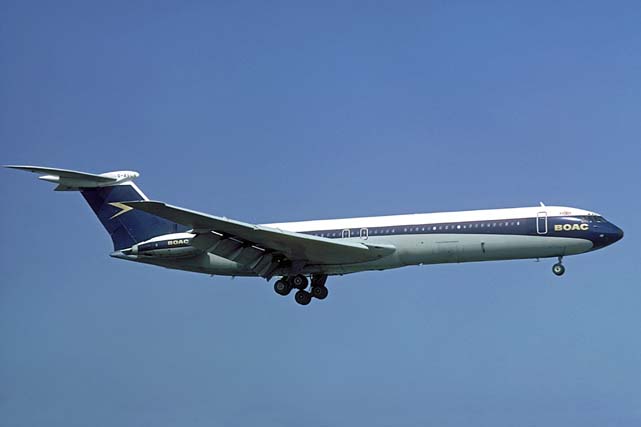
Vickers Super VC10 Srs 1151
The potential of the Vickers jet transports was underlined when, on 9 July 1959, one of the much smaller Valiant bombers of No 214 Squadron, RAF, flew non-stop from overhead Heathrow to Cape Town,
a distance of 6,060 miles, in 11 hours 28 minutes (530mph). That was followed, in May 1960, by a first non-stop flight to Singapore – from Marham in Norfolk – 8,110 miles in 15 hours 33 minutes
(535mph), twice refuelled in the air. On 15 May 1957, a Valiant of No 47 Squadron, RAF, was the first to drop a British atomic bomb in the Christmas Island operation "Grapple". The Valiant was
described by Edwards as "the best aeroplane we ever did".
In February 1960, Edwards was in the forefront of the bringing together of the aircraft and guided weapons activities of the English Electric Company Ltd, Vickers Armstrongs Ltd and (subsequently)
Hunting Aircraft Ltd, to form the British Aircraft Corporation (BAC). Its first chairman was Marshal of the RAF Viscount Portal of Hungerford and its first managing director George Edwards, who
succeeded Lord Portal as chairman in 1963.
By then, Vickers under Edwards (who was knighted in 1957 and appointed to the Order of Merit in 1971) had designed and built the Rolls-Royce-powered VC 10 and Super VC 10 – a long-range, civil and
military transport aeroplane (first flown on 29 June 1952) which carried forward the philosophy of the V 1000 of six years before. In all, 82 of this last Vickers aeroplane were built and delivered
from its Weybridge works at Brooklands.
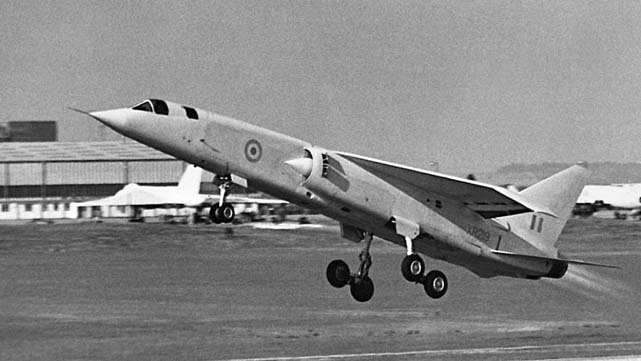
BAC - British Aircraft Corporation TSR 2 supersonic strike aircraft
Ten years after the cancellation of the V 1000, with a long list of successes, Edwards suffered another major disappointment. It was the political decision, taken in 1965, to scrap the TSR 2
supersonic strike aircraft after six years and £125m of development work followed by successful flight trials. The TSR 2 was killed by a combination of a hostility on the part of the new Labour
government of October 1964, together with antagonism from Earl Mountbatten of Burma, then Chief of the Defence Staff, and his Chief Scientist, Lord Zuckerman.
How Edwards took the cancellation showed still further what a great man he was – re-emphasised in 1970 when an equally ill advised Conservative government refused to support the prospective
245-passenger, 1,500-mile, BAC Three Eleven wide-body twin-jet project, despite British European Airways' stated requirement for it backed by some 40 prospective overseas orders. That left the
largely similar Airbus A 300 to gain the substantial market (at much higher costs) a decade later.
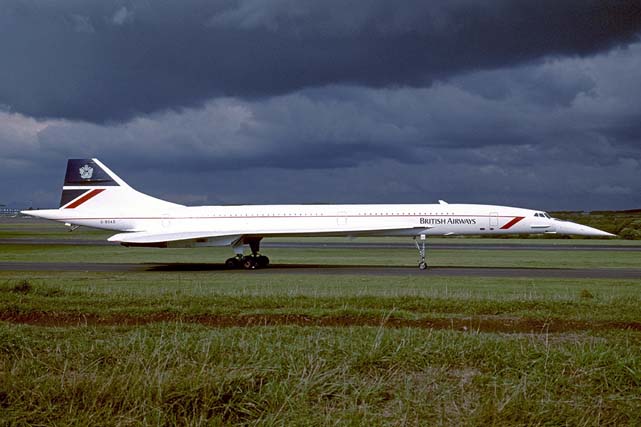
Aerospatiale-BAC Concorde 102
In happier vein, however, without Edwards (and without General Charles de Gaulle), there certainly would not have been Concorde and probably no Tornado – now the backbone of Nato's striking force.
The way in which Edwards steered a straight path forwards through the toils of successive collaborative designs for both Concorde and Tornado (late MRCA) alongside some very difficult European
partners, was an illustration of his sterling character and a tribute to his forbearance, combined with an inflexible determination. He remarked, "Carrying on in two languages was quite a job."
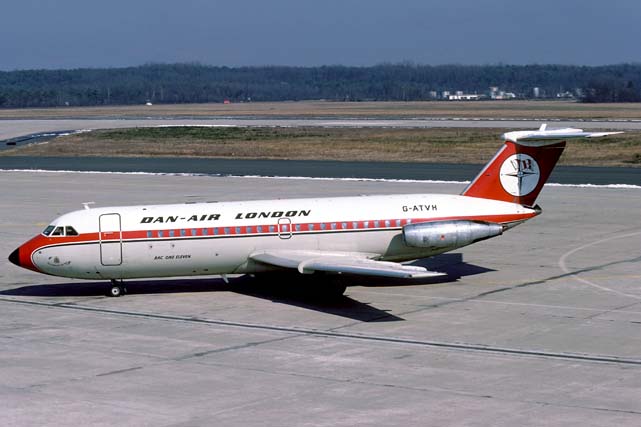
BAC - British Aircraft Corporation 1-11
In the meantime, the VC 10 was followed by the BAC One Eleven short-haul, twin-jet, civil transport, carrying up to 99 passengers. BAC built 234 One Elevens at Hurn Airport in Bournemouth while a
parallel production line was started in Romania.
With Viscount, Vanguard, VC 10, One Eleven, Jaguar and Tornado all in service, Edwards retired in 1975 on reaching the age of 67. He continued to be much sought-after for advice by his successors
on both sides of the Atlantic. He responded to it all with wisdom, born of unrivalled experience, and combined with generous tributes to his former colleagues.
Of his earlier struggles with officialdom on behalf of the British aircraft industry he remarked, "I emerged on many occasions covered with blood after doing battle with politicians – though I
think that a fair bit of the blood was theirs", observing that the fundamental problem is that "the aerospace business is long-term whereas politics are short".
Among Edwards's many awards were two Gold Medals of the Royal Aeronautical Society in 1957, the Albert Medal of the Royal Society of Arts in 1971 and the Royal Medal of the Royal Society in 1974.
He was elected a Fellow of the Royal Society in 1968.
Though he suffered much ill-health – and survived a long series of operations – he never gave up, remaining a kindly, humorous (and occasionally caustic) observer of the passing scene, a loyal
friend and a cheerful companion.
Peter Masefield
 Books about Sir George Edwards
Books about Sir George Edwards



